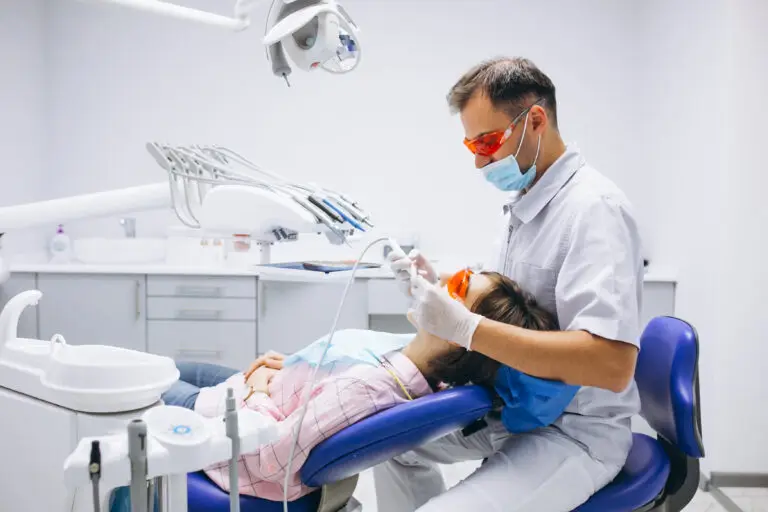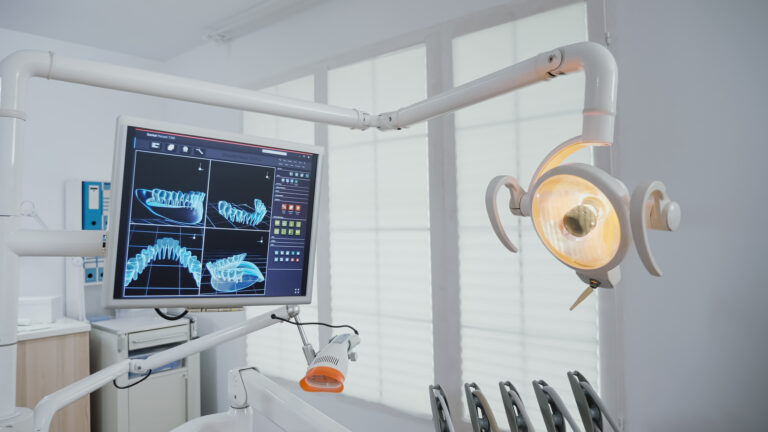Why Cold Chain Management Matters for Vaccine Storage Suppliers
Table of Contents
Introduction
For Vaccine Storage Suppliers, effective Cold Chain Management is not just a regulatory requirement, it’s a critical factor in saving lives.
With the growing demand for immunization and temperature-sensitive biological products, maintaining the right conditions from factory to clinic has become more essential than ever.
Especially in India, where Healthcare MSMEs play a growing role in rural and semi-urban immunization drives, even a small lapse in temperature control can mean the difference between safe vaccines and spoiled stock.
Therefore, understanding how to implement, monitor, and optimize your vaccine storage systems is non-negotiable.
This article covers actionable strategies for Cold Chain Management tailored specifically for Vaccine Storage Suppliers, including tips for equipment, monitoring, transport, and compliance.
Whether you serve hospitals, clinics, or government programs, these best practices will help you protect your inventory, build trust with clients, and ensure operational success.
Let’s explore each section in detail
1. What are the Critical Temperature Ranges for Storing Vaccines, and How Can Suppliers Ensure Consistency?
For Vaccine Storage Suppliers, maintaining the correct temperature is the foundation of Cold Chain Management. Most vaccines must be stored consistently within a narrow range of 2°C to 8°C.
This range ensures the biological integrity and effectiveness of the vaccine. Even a brief temperature excursion beyond this limit can reduce potency, cause spoilage, or render an entire batch unusable.
To maintain these precise conditions, suppliers must implement a multi-layered approach:
- Use calibrated digital thermometers or data loggers with built-in memory to track temperature every few minutes. Devices with alerts can notify staff if there’s a temperature breach in real time.
- Install refrigerator or cold-room monitoring systems that operate on backup power during outages.
- Ensure temperature mapping across all shelves, corners, and storage zones to avoid hot or cold spots within the equipment.
- Train staff to check, record, and respond to readings at least twice a day and during transit.
In short, for Healthcare MSMEs in the vaccine supply chain, consistency in cold chain management isn’t optional; it’s a safeguard for public health and brand reputation.
2. How Can Cold Storage Suppliers Monitor Vaccine Temperatures in Real-Time?
For Vaccine Storage Suppliers, real-time monitoring is essential to uphold cold chain reliability. It ensures vaccines are consistently stored within the safe temperature range of 2°C to 8°C, especially during unexpected events like power failures or equipment malfunctions.
Here’s how Cold Chain Management can be enhanced using digital tools:
1. IoT-Based Temperature Data Loggers
These smart devices continuously track and log temperature inside storage units. Unlike manual thermometers, they:
- Monitor 24/7
- Record temperature at short intervals (e.g., every 5 minutes)
- Upload data automatically to cloud dashboards
2. SMS and Email Alert Systems
In case of a temperature breach, IoT loggers instantly trigger alerts via SMS or email to the responsible team. This ensures:
- Faster response
- Reduced product loss
- Immediate corrective action (e.g., switching to backup power or relocating stock)
3. Cloud-Connected Refrigeration Units
Modern vaccine refrigerators come with built-in connectivity:
- Display real-time readings
- Enable remote access from any device
- Support historical data logs for audits and compliance
In essence, real-time monitoring empowers Healthcare MSMEs and cold chain suppliers to ensure safe, compliant, and efficient vaccine storage, protecting both product integrity and patient trust.
3. What Are the Most Common Cold Chain Failures and How Can Vaccine Storage Providers Prevent Them?
For Vaccine Storage Suppliers, maintaining the cold chain is non-negotiable.
Yet, small missteps can lead to costly disruptions.
Understanding the most common cold chain failures and how to proactively prevent them is critical for every Healthcare MSME involved in cold chain management.
Common Failures in Vaccine Storage:
Failure Type | Impact on Vaccine Storage | Prevention Strategy |
Power Outages | A temperature spike leads to spoilage | Install backup generators and voltage stabilizers |
Frequent Door Openings | Warm air inflow disrupts the temperature | Use magnetic door alarms and staff access protocols |
Improper Calibration | Inaccurate temperature readings | Schedule quarterly calibration of thermometers/loggers |
Lack of Backup Units | No contingency in case of unit failure | Maintain at least one alternate cold storage unit |
Poor Staff Training | Mishandling leads to temperature shifts | Conduct SOP training for storage and monitoring |
Prevention Best Practices:
- Install Automatic Temperature Alerts
Tools that send SMS/email notifications when limits are breached can help act quickly before vaccines spoil.
- Regular Equipment Audits
Inspect insulation, seals, thermostat functions, and battery backup monthly.
- Set SOPs for Manual Overrides
When automation fails, having a standard operating procedure ensures minimal damage.
- Maintain Temperature Logs
Keeping 30-day records ensures regulatory compliance and enables root cause analysis during failures.
In summary, reliable cold chain management requires not just equipment, but systems, redundancy, and discipline. Vaccine integrity depends on it.
4. Which Type of Cold Chain Equipment Is Best for Small-Scale or Rural Vaccine Distribution?
When serving remote areas, Healthcare MSMEs involved in vaccine storage face unique challenges.
These include unreliable electricity, poor road infrastructure, and a limited budget for high-end refrigeration.
Therefore, choosing the right cold chain management equipment becomes essential for success.
Comparison of Cold Chain Equipment for Rural or Small-Scale Use

Equipment Type | Best Use Case | Pros | Limitations |
Solar-Powered Refrigerators | Off-grid rural clinics and PHCs | Sustainable, no electricity needed | High initial cost, requires good sunlight |
Vaccine Carriers | Last-mile delivery from PHCs to camps | Lightweight, affordable, maintains cold for 12–24 hrs | Limited capacity, short hold time |
Portable Coolers with PCM | Mobile vaccination vans and field work | Stable temperature using phase-change materials | Needs pre-conditioning, less durable for long use |
Power-Stabilized Freezers | Semi-urban clinics with erratic electricity | Effective in unstable voltage conditions | Still depends on grid power and proper maintenance |
Key Takeaways for Vaccine Storage Suppliers:
- For last-mile delivery, WHO-approved vaccine carriers and portable coolers are cost-effective and compliant.
- Solar refrigerators are ideal for health centres in remote areas without electricity.
- Power-stabilized freezers work best where electricity is available but inconsistent.
- Always ensure that the equipment has WHO PQS certification to meet healthcare standards.
Ultimately, matching the cold chain equipment to your operating environment is vital.
For vaccine storage suppliers targeting rural markets, combining portability with resilience ensures reliable delivery, even in India’s toughest terrains.
5. What Maintenance and SOPs Should Cold Chain Suppliers Follow for Reliable Storage Performance?
Maintaining a robust cold chain isn’t just about having the right equipment, it’s also about following strict Standard Operating Procedures (SOPs) and a regular maintenance plan.
For vaccine storage suppliers and healthcare MSMEs, consistency in operations is the backbone of effective cold chain management.
5. What Maintenance and SOPs Should Cold Chain Suppliers Follow for Reliable Storage Performance?
Maintaining a robust cold chain isn’t just about having the right equipment, it’s also about following strict Standard Operating Procedures (SOPs) and a regular maintenance plan.
For vaccine storage suppliers and healthcare MSMEs, consistency in operations is the backbone of effective cold chain management.
Here’s a breakdown of essential practices for reliable vaccine storage:
A. Preventive Maintenance Checklist
Task | Frequency | Purpose |
Clean condenser coils | Monthly | Improves cooling efficiency |
Calibrate temperature devices | Quarterly | Ensures accurate monitoring and compliance |
Check door seals | Weekly | Prevents cold air leakage |
Battery/inverter testing | Monthly | Confirms power backup readiness |
Clean interior surfaces | Weekly | Maintains hygiene and avoids contamination risks |
B. Temperature Monitoring SOPs
- Use digital thermometers or data loggers that store hourly readings.
- Maintain a temperature logbook or dashboard, reviewed daily.
- Set alerts for deviations beyond 2°C–8°C.
- Conduct monthly audits of data to detect trends or issues.
C. Staff Training Essentials
- Train staff on how to handle vaccines during loading/unloading.
- Educate on the importance of limited door opening.
- Simulate emergency scenarios (e.g., power cuts) and document action protocols.
D. Daily Cold Chain Checklist
Daily Task | Status |
The temperature is within the safe range | ✅ / ❌ |
Door seal intact | ✅ / ❌ |
Power backup functional | ✅ / ❌ |
Ice packs/vaccine carriers ready | ✅ / ❌ |
Temperature logbook updated | ✅ / ❌ |
By sticking to these SOPs and routine maintenance plans, vaccine storage suppliers can ensure that their cold chain systems remain reliable, compliant, and ready, especially when lives depend on it.
Conclusion: Ensuring Cold Chain Excellence for Vaccine Storage Suppliers
In today’s healthcare landscape, Cold Chain Management is no longer optional it is mission-critical.
From maintaining the ideal 2°C to 8°C temperature range to preventing vaccine spoilage due to power cuts, every aspect of vaccine storage must be precise and proactive.
Real-time monitoring tools, such as IoT data loggers and SMS alerts, are now essential for consistency and compliance.
For Healthcare MSMEs and vaccine storage suppliers, choosing the right equipment, whether it’s solar refrigerators for rural use or portable coolers for last-mile delivery, can make or break operational reliability.
Equally important is a solid foundation of SOPs, including daily checklists, scheduled maintenance, staff training, and preventive calibration.
If you’re supplying vaccines or planning to enter the immunization supply chain, don’t wait for a system failure.
Invest in the right tools, build resilience into your operations, and become a trusted partner in public health.
Following Video Might be Helpful for You
Also Read,
- The Ultimate Guide: Working Capital Loans for Small Business (MSMEs) in 2025
Understanding the Impact of Payment Terms on Working Capital for Clinics
How Poor Inventory Management Hurts Working Capital in Pharmacies.
Want a Better Business Credit Score? Small Pharmacies Can Now Use UPI & Cards to Build It
Want a Better Credit Score? Use Small Daily Payments to Build Your CBIL (For Clinics & Pharmacies)
Case Study:How a Small Clinic Improved Its Working Capital Management





